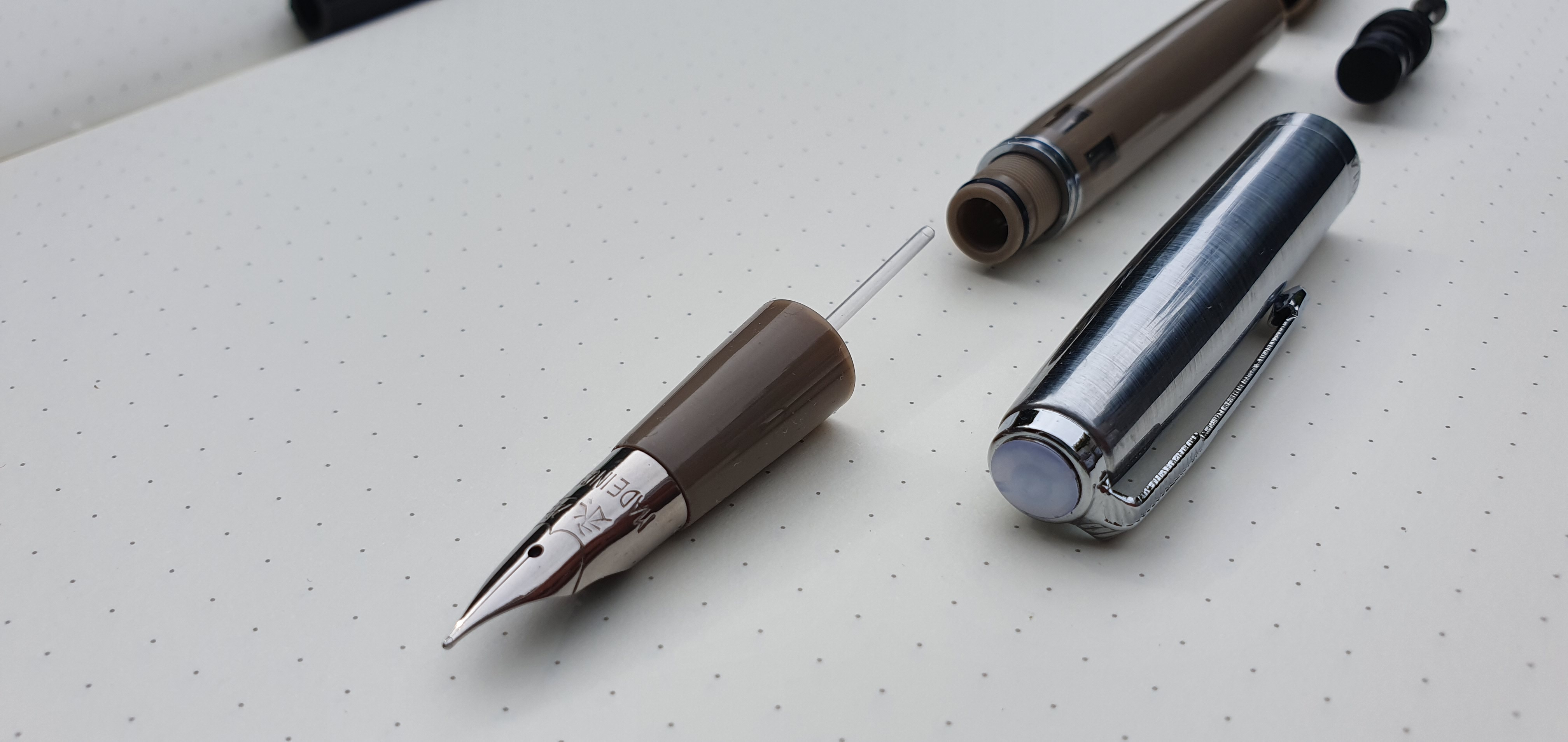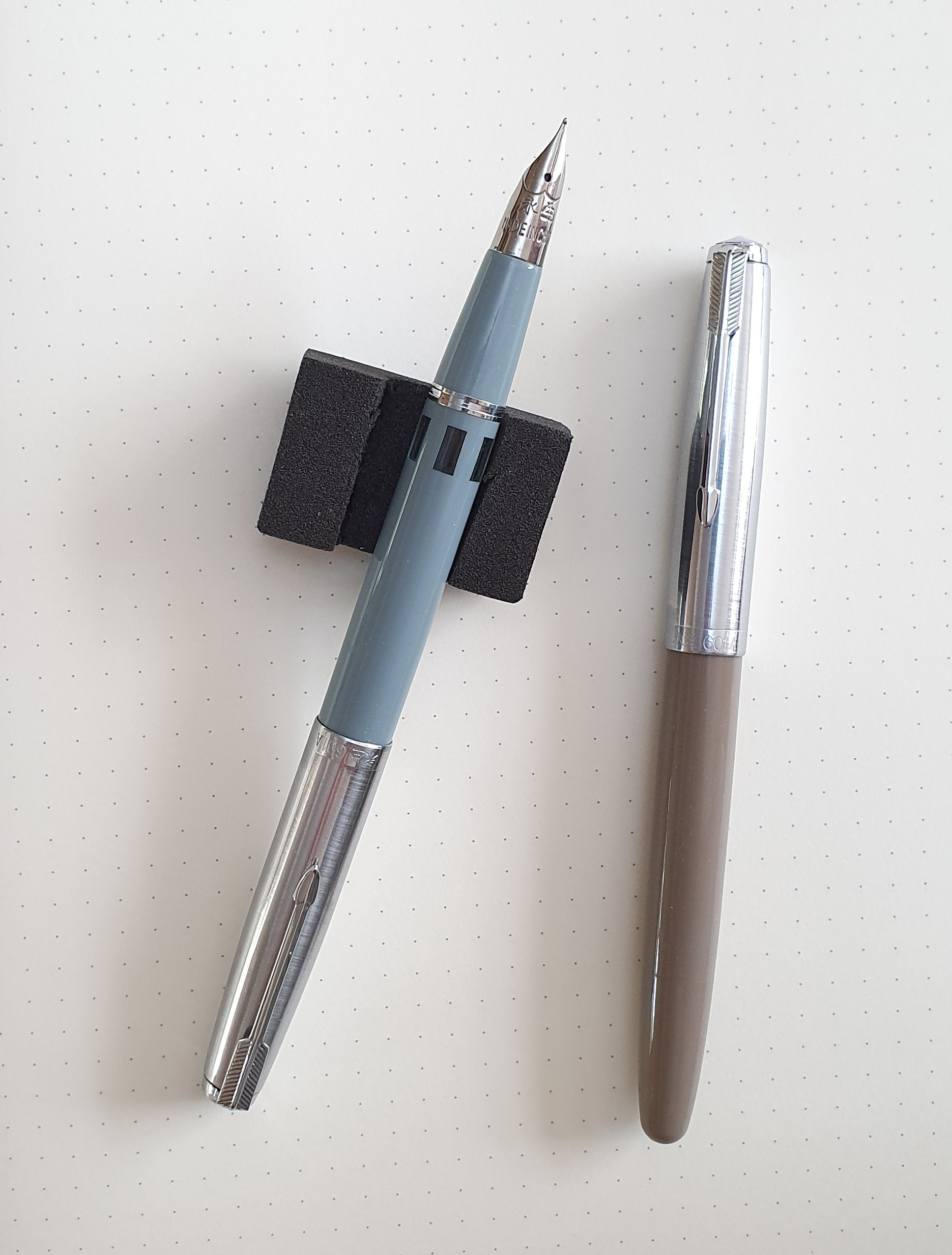This week I had the pleasure of seeing The Other Favorites play a gig in London, as part of their current USA, Europe and UK tour. So as an off-topic warning, this post is not about fountain pens but is to tell you about this remarkable duo, for the benefit of any yet to discover them.

The Other Favorites are the American folk and bluegrass guitar duo, Josh Turner and Carson McKee. Currently both based in New York, they were friends in school and have been putting out music videos on YouTube since 2007. These, even the very early ones, show an astonishingly high standard of musicianship and include a wide range of pop and rock classic covers as well as some of their original songs.
I first stumbled across them on YouTube, about five months ago, where I had been watching finger-style guitarists Jerry Reed and Chet Atkins, Tommy Emmanuel and Richard Smith. Josh Turner, not to be confused with the country/gospel singer of the same name, has to date produced over 300 videos and attracted some 77 million views.
As happens with YouTube, it keeps plying me with more of their videos to watch. I have watched well over a hundred, many of them several times over.
Of course, there are plenty of good guitarists out there but what I find unique about Josh is his versatility. He is a multi-instrumentalist playing various types of guitars (folk, classical, electric, gypsy-jazz), banjo, mandolin, a lute, electric bass, drums and keyboard.
Secondly, he seems equally at home in a wide range of musical styles, from folk, pop, bluegrass, classic rock, Latin pop, jazz and swing, plus classical music for guitar. His videos feature many other musicians and singers too. And he has a very pleasant singing voice and a wide vocal range, such as on a cover of The Beach Boys’ Auld Lang Syne, where he sings all the parts. Other good examples of his video work are David Bowie’s Starman and Pink Floyd’s See Emily Play, on which he plays almost all the parts.
Combine all this virtuosity with a high technical ability at performing, recording, mixing, editing and producing and his natural ease and likeability on camera and you have a rare combination of talent and ability.
Carson McKee too has a great singing voice and is a superb acoustic rhythm guitar player and occasionally can be found on percussion. Josh and Carson’s voices blend really well together and their harmonies sometimes put me in mind of The Everley Brothers among others.
In May I discovered that The Other Favorites were playing in London, on 20 August at Bush Hall in Shepherd’s Bush. I jumped on the tickets and was greatly looking forward to seeing them live, as I continued catching up on the videos. They are currently touring with Reina del Cid, a 31 year old American singer-songwriter guitar player and Toni Lindgren, guitarist who also have a huge following on YouTube for their regular videos on Sundays, called “Sunday Mornings with Reina del Cid.”
The concert did not disappoint. Bush Hall is a former dance hall dating from 1904 and made an ideal, intimate venue. I am guessing that the audience was of about 300. Sound levels were just right and I was sitting about six rows back, close enough to see their facial expressions.

The show began with a set of nine songs from Reina del Cid and Toni Lindgren, joined on stage by Josh Turner for one song, to play electric bass, on Woolf. This was her song about Virginia Woolf of whom she was a big fan having read all her books and diaries.
Next Josh and Carson took to the stage. Their first song, “Angelina”, put down a marker of just what a high standard of guitar work we were in for. This was followed by “Solid Ground” memorable in their video for being recorded at the coast with surf crashing on the rocks right behind them. Next, Carson introduced “The ballad of John McCrae”, a murder ballad that he had written, explaining that the tradition for such songs had come to the States from the UK and that the juxtaposition of dark lyrics with jaunty melodies “tickled his funny bone”.
They then played another original, one of their earliest songs made together in 2007 called “Flawed recording”, the tune and lyrics of which stay with you.
Next they shifted gear to give a blistering performance of Richard Thompson’s “Vincent Black Lightning 1952” equalling in my view, Richard Thompson’s own rendition when I saw him in London a year or so ago.
Then they played another of their originals, “The Levee”, another one which is enjoyable to watch on their videos on guitar and banjo with great playing and vocal harmonies.
Carson had learned to play guitar from his father and jammed at family get togethers with his father and uncles. Bob Dylan had been a big influence. They then played one of their favourite Dylan songs “Don’t think twice it’s alright”.
This was followed by a beautifully pure vocal harmony for the Irish song “The Parting Glass” with no instruments. Then, in another change of pace they followed this with a rousing performance of Johnny Cash’s “Folsom Prison Blues”, another of their covers which is a must-see on YouTube, for Carson’s spirited vocal delivery, Josh’s guitar solo and for the way they fall about laughing at the end.
At this point, they were joined on stage for the rest of the evening by Reina del Cid and Toni Lindgren to play as a foursome, adding two more acoustic guitars and female vocals which was a joy to behold. They sang “Morse Code”, a rather delicate and sad song that Reina and Josh had also recorded together for a YouTube video.
Josh released his first solo album, in April 2019 called As Good a Place as Any, with all songs written, produced, mixed and mastered by himself, at home. (Just pause, and take that in). The next piece was “Nineteen and Aimless” which is the first track on his album.
The foursome then played Patsy Cline’s “Tennessee Waltz” followed by “The Weight” by The Band – making good use of the four voices for the cumulative rising harmonies in the chorus.
It was then almost time to end. They were brought back on stage to enthusiastic applause for an encore and played “Dooley”, which can also be seen on their videos followed by “Stuck in the middle with you” from Stealers Wheel.
It was a very impressive show. Given that they were well into an extensive tour, the show still seemed fresh and intimate and they were genuinely glad of their supporters here in London. I got to meet them all at the merch desk!
If you missed them this time, then Josh hopes to tour another show later in the year when he will perform the entirety of Paul Simon’s Graceland album. And meanwhile there are plentiful videos to catch up on as well as his solo album which can be heard on his web site.
Edit.25 August 2019: for a handy list of songs they played with links to each song in their videos, visit setlist.fm and see their Paris show of 18 August which had much the same content.




